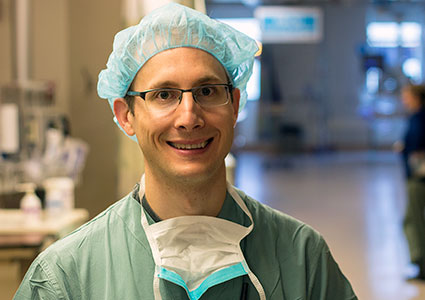Job Description

Without anesthesiologists, most surgery would be impossible. Anesthesiologists are doctors who administer the drugs that prevent patients from feeling pain or sensation during surgery. But that's not all that these specialists do. They are responsible for the well-being of the patient before, during, and after surgery.
Prior to surgery, the anesthesiologist meets with patients to assess their medical history, examine them if necessary, and decide what anesthetic should be used. Decisions about the type of anesthetic are based on the type of surgery and the patient's health, including other medications being taken.
Before the operation, the anesthesiologist starts an intravenous line (IV), connects monitors, and then administers general or regional anesthesia. General anesthesia makes a patient unconscious. Regional anesthetic affects only a particular area, such as the leg or the arm.
During surgery, anesthesiologists use the monitors to observe changes in the patient's vital signs such as heart rate, breathing, and blood pressure. The heart is monitored by an electrocardiograph (ECG) which shows each heartbeat and on a screen. A blood pressure cuff, usually on the arm, measures blood pressure at regular intervals. The oximeter is a device is attached to fingertips or earlobes to measure oxygen in the blood.
In addition to minding the monitors, the anesthesiologist also observes the patient. If necessary, they must respond to any emergencies or unexpected developments that take place during surgery. In short, the anesthesiologist is responsible for the patient's well-being during surgery, so that the surgeon is free to concentrate on the actual surgical procedure.
After surgery, the anesthesiologist is responsible for ensuring that the patient awakens from anesthesia safely and, if needed, for prescribing pain-relieving medication in the period following surgery.
Some anesthesiologists develop an expertise to treat patients with chronic or ongoing pain. These anesthesiologists work in pain management centres in hospitals or in specialty clinics devoted to pain management. In this role, anesthesiologists may administer regional and local anesthetic and prescribe pain relieving medication. Often, these anesthesiologists work as part of a team with other professionals such as physiotherapists and psychologists to find ways of lessening pain.